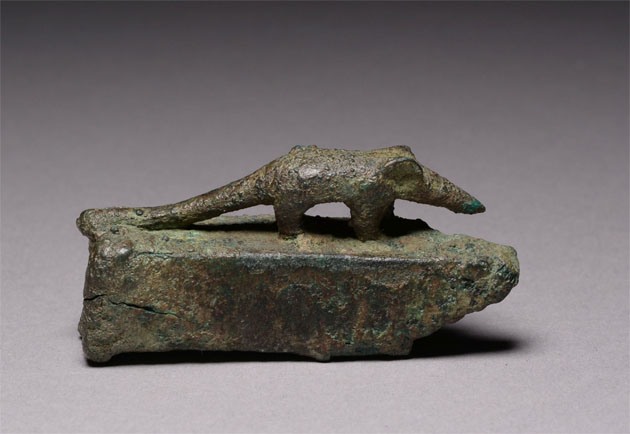Shrew Sculpture – Egyptian style

A fascinating ancient Egyptian bronze shrew sarcophagus, dating to the Late Period, 664 – 332 BC.
I found this image at ArtAncient whilst searching for information about shrews – to get to know more about these little mammals that I’m rather fond of, as you know from this recent shrew, and this one.
The sarcophagus is of typical rectangular open form, with a hollowed out lower section which would have contained the mummified shrew, carefully wrapped in linen. The upper side of the sarcophagus is decorated with a charming figure of the animal as it would have appeared in life, snout slightly downturned as if searching for food, ears raised and long tail.

The ancient Egyptians believed that their deities could appear on earth in animal form, as such, shrews played an important role in Egyptian cult practices, particularly during the later dynasties. They were considered an animal that came from the dark, and were often associated with the mongoose, an animal that would appear during the day. These two species may well have represented two faces (night and day, dark and light) of the same deity. Indeed, the Egyptians built many animal cemeteries along the Nile, which they often termed resting places of the “Osiris God animal.”
Though animal burials were practiced throughout ancient Egyptian history, the organised production of animal mummies for sale and burial as votive objects began in the Late Period. The animals would be specially bred and well looked after, before being prepared for their journey into the afterlife. This evocative relic dates from this period.

2 Comments
so interesting. I have had a fascination with Egypt since my early teens when I first became aware of ancient Egypt. I’ve often though I lived back then in one of my lifetimes.
My interest is growing Ellen – I had no idea that mummification was a production line! It is fascinating that we ‘feel’ we might have been in another time – I don’t doubt it, you’re quite an exotic!